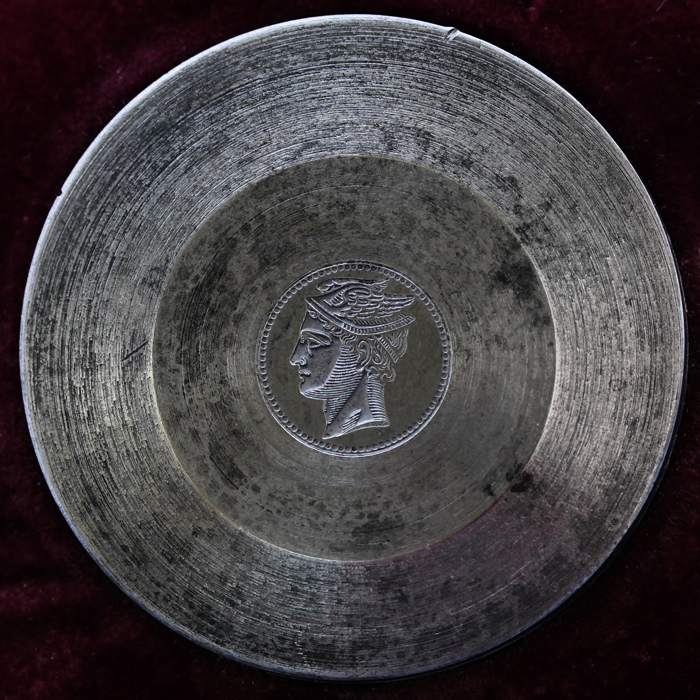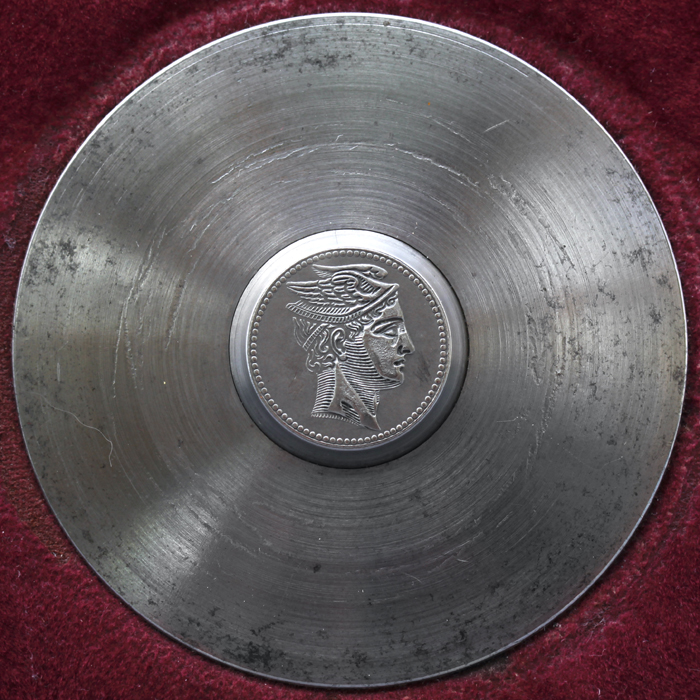Exhibitor: Louis Fanchini
Exhibit: The original medallion die of the Large Hermes Head
The original medallion die was realised by the Chief Engraver of the French Mint in Paris, Désiré-Albert Barre (1818-1878), in late 1860 / early 1861. The Hermes head effigy was engraved on mild steel, using the technique of engraving called “taille de relief”, also named “gravure en épargne”. The engraver etched on each side of the line which he wished to achieve, in order to obtain the line in relief. The “gravure en épargne” method is used for the engraving of punches (or dies) intended for the manufacture of plates for typographical printing. Indeed, in typography, it is the projecting parts of the plate that print the sheet of paper, by pressure, after having been inked.
The original medallion die is the only one to have been engraved by Désiré-Albert Barre; all the other parts of the final die were created by the other members of his staff at the French Mint in Paris.
The final die of the Large Hermes Head, the only one ordered by the Hellenic Postal Administration, was issued from this original medallion die, in fact from its matrix (see the following description of the matrix of the medallion die).
Exhibitor: Louis Fanchini
Exhibit: The matrix of the original medallion die of the Large Hermes Head
When Désiré-Albert Barre had finished the engraving of the original medallion die, he struck a matrix. By matrix we mean: a punch obtained mechanically by use of the original die to press (or strike) a block of soft steel in a coining press. The matrix is thus the inverse imprint of the original die, the recesses having become raised (in relief) and vice-versa.
The matrix was hardened and was used to create the final die. The final die was used to coin the 150 clichés of each typographic plate for the first seven values of the Large Hermes Head of 1861.
After a few early unfortunate experiences, this operation was made almost systematically by Chief Engravers in the French Mint to enable them, if necessary, to recreate, or modify the final punch. Indeed, the punches were subject to enormous mechanical forces during the tempering (or hardening) and/or during the striking operations which could alter their design or even cause breaks in the engraving. Thus, if a punch was broken or damaged in an operation, it was sufficient to recreate a new punch from this matrix which was retained for this purpose.
Texts and illustrations: Louis Fanchini





